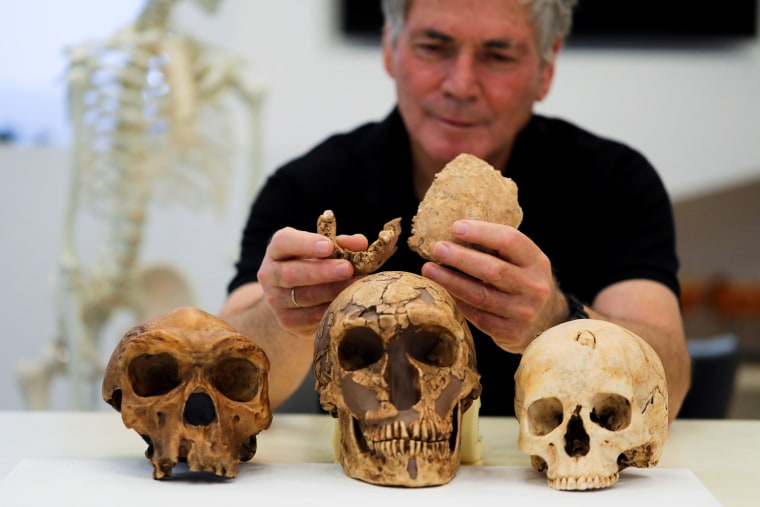Fossilised bones recovered from an ancient sinkhole in Israel may belong to a previously unknown group of extinct humans that lived in the Levant more than 100,000 years ago.
Researchers unearthed the bones alongside stone tools and the remains of horses, fallow deer and wild ox during excavations at the Nesher Ramla prehistoric site near the city of Ramla in central Israel. Excavations uncovered prehistoric remains that could not be matched to any known species from the Homo genus.
Researchers from Tel Aviv University and the Hebrew University of Jerusalem dubbed the “extraordinary discovery” the “Nesher Ramla Homo type” after the site, in a study published in the journal Science.
The fossils date to between 140,000 and 120,000 years ago, and the team believes the Nesher Ramla type would have overlapped with Homo sapiens, the lineage of modern humans.
The bones, described by one expert as “a major discovery”, have a distinctive combination of Neanderthal and early human features which set them apart from the Homo sapiens that lived in the region at the same time. While the scientists hold back from claiming a new species, they believe the Nesher Ramla individuals may have played an important role in the human story.
The anatomy of the Nesher Ramla bones is more primitive than those from contemporaneous Neanderthals in Eurasia and Homo sapiens in the Levant, leading the researchers to argue that the group, named the Nesher Ramla Homo, might be the elusive group that contributed to Neanderthal evolution.
“Together with other studies, this work shatters the simple picture of modern humans coming out of Africa and Neanderthals living in Europe. The picture is much more complex,” said Dr Yossi Zaidner at the Hebrew University of Jerusalem.
“The idea is what we catch here are the last survivors of a population that contributed to the development of Neanderthals. They were living alongside Homo sapiens.”
Israel forms a land bridge between Africa, Europe, and Asia, making it a likely route for populations on the move.
“It’s kind of like a huge bus station where hominin populations passed through either from Africa to Asia, or coming back to Africa,” said study co-author Israel Hershkovitz, an archaeologist at Tel Aviv University.
With this in mind, it’s possible that the Nesher Ramla human mingled with travellers from elsewhere, which may have led to their mixed physical features.
And while it was once thought that Neanderthals originated in Europe, genetic evidence from other studies suggests that they may have paired up with Middle Pleistocene humans from Africa and West Asia.




